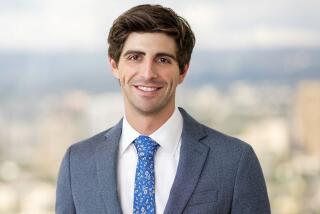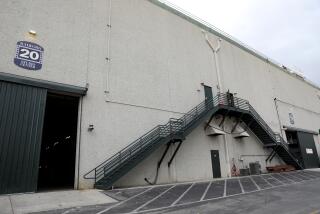Some Police Criticize Anaheim’s Handling of Disneyland Death
- Share via
Investigators in several cities with major amusement parks say Anaheim police violated basic standards of police work when they delayed going to the site of a serious accident at Disneyland until after park employees had moved and cleaned up some of the evidence.
“If there’s a serious injury out here, we are going to be there on the spot,” said Los Angeles County Sheriff’s Lt. Carl Deeley, who patrols Magic Mountain near Santa Clarita.
Even before Disneyland officials briefed Anaheim police, amusement park workers had mopped up the scene of the accident that ultimately took the life of a tourist and injured his wife and an employee.
Police defended their decision not to view the accident site until after Disneyland officials had washed away blood, moved evidence and brought witnesses for police to interview, often accompanied by a Disneyland official. It was an accident, not a crime scene, Anaheim police said.
But other police agencies that provide services to amusement parks said they would have raced immediately to seal off the scene, corral witnesses and probe for evidence of foul play.
“You lose a lot by not going directly to the scene,” said Santa Clara Det. Sgt. Phil Zaragoza, who recently investigated a death at Paramount’s Great America amusement park in that Bay Area city. “You want to know [the workers’] state of intoxication or sobriety. What if there were sabotage? If the evidence was cleaned up, how would anyone know?”
It is impossible to tell whether a serious incident is an accident before a full investigation is conducted, several police officers said.
Buena Park Police Sgt. Ken Coovert, whose agency covers Knott’s Berry Farm, said: “If there’s a death and it’s potentially due to worker error, that’s a potential manslaughter case.”
Coovert and others interviewed for this story commented before the release late Thursday of Anaheim’s police report, which indicates that detectives who investigated the accident did not arrive at the park until three hours after it occurred, then spent another hour and a half with Disneyland officials and witnesses before heading to the scene. A patrol officer, however, had arrived at the park 40 minutes after the incident.
Santa Clara Sgt. Anton Morec said that he was unfamiliar with Anaheim’s policies but that most agencies would send officers immediately to the site of the incident.
“You’re taking control of the information,” Morec said. “You’re not allowing them to spoon-feed you. Maybe Anaheim has a special relationship with Disney. Maybe they trust their security. Obviously, there’s a comfort zone.”
The coroner’s report attributed the Disneyland accident to a worker’s attempt to tie up the sailing ship Columbia at dock while the vessel was moving too fast. The report said a mooring rope pulled off a metal cleat that struck two tourists in the head, while the rope seriously injured the worker on the dock. The state Division of Occupational Safety and Health is investigating the accident because the worker was involved.
The incident has raised questions about how the police--and Disney officials--handled it.
“You need to have an independent investigation that would be uninfluenced by Disney,” Morec said. “Maybe the worker was under the influence, maybe the maintenance records indicate this cleat was due for maintenance two weeks earlier. You treat it as a crime scene until you know otherwise.”
Anaheim Police Chief Randall W. Gaston on Thursday supported the actions of his detectives, saying it is “usually counterproductive to rush directly to the scene.”
He said it was the decision of his seasoned lieutenant to stay in Disneyland’s security office to question people “who had knowledge of what transpired” instead of heading first to the scene.
“The detective on the scene didn’t think there would be any additional information to be gained by rushing to the scene,” Gaston said. Paramedics had summoned patrol officers to Disneyland when it became clear that one of the victims might die.
Luan Phi Dawson, 33, of Duvall, Wash., died two days later of a brain hemorrhage and skull fracture. His wife, Lieu Thuy Vuong, 43, underwent surgery for facial disfigurement. The Disneyland employee, Christine Carpenter, 30, had surgery for a severely lacerated foot.
Gaston said that much of the accident scene had been cleaned up by the time detectives arrived and that Disneyland had moved much of the equipment involved.
But, he added, “we were able to inspect all the apparatus that was involved. . . . No item that would have been of evidential value had been tampered with or was missing.”
Despite the cleaned-up site, Gaston said his detectives conducted a thorough inquiry, documenting the scene and taking numerous measurements to reconstruct what happened. He said he is confident that his investigators did not miss any possible evidence of sabotage or other foul play.
A ride operator at the park, who asked to remain anonymous, said Disneyland employees started to clean up the area within 10 minutes of the accident. A custodial supervisor was seen wiping down blood-spattered rafters. Disneyland officials say they cleaned up the site because it was unsightly for visitors.
Gaston said he would not advise Disneyland to refrain from cleaning up accident sites in the future, adding that such things must be judged on “a case by case” basis.
And he said his department had been “if anything, overly cautious in investigating.”
But Zaragoza said it is important that trained police investigators--not park officials, however well-intentioned--be the first to question witnesses.
“We prefer not to have people’s thought processes tainted in any way by outside suggestion,” he said. In addition, it “removes the stigma of conflict of interest. The community deserves an independent investigation.”
Disney spokesman Ray Gomez said Disneyland in no way impeded Anaheim investigators’ “full and immediate access to the scene.” But he declined to address whether workers should have cleaned up the accident scene and moved evidence before police arrived.
Jay Siegel, associate director of criminal justice at Michigan State University, said the Anaheim police’s tactics are fairly common when a popular and powerful company like Disney is involved.
“You’ve got a large company with a large security force. Unless there is some strong evidence that a crime has been committed, then the police--for public relations or political reasons--allow the company to handle it largely themselves,” Siegel said.
“It’s the recognition of reality over the best possible police work. I think it’s realistic. I don’t think it’s good.”
*
Times staff writer E. Scott Reckard contributed to this story.
More to Read
Sign up for Essential California
The most important California stories and recommendations in your inbox every morning.
You may occasionally receive promotional content from the Los Angeles Times.













